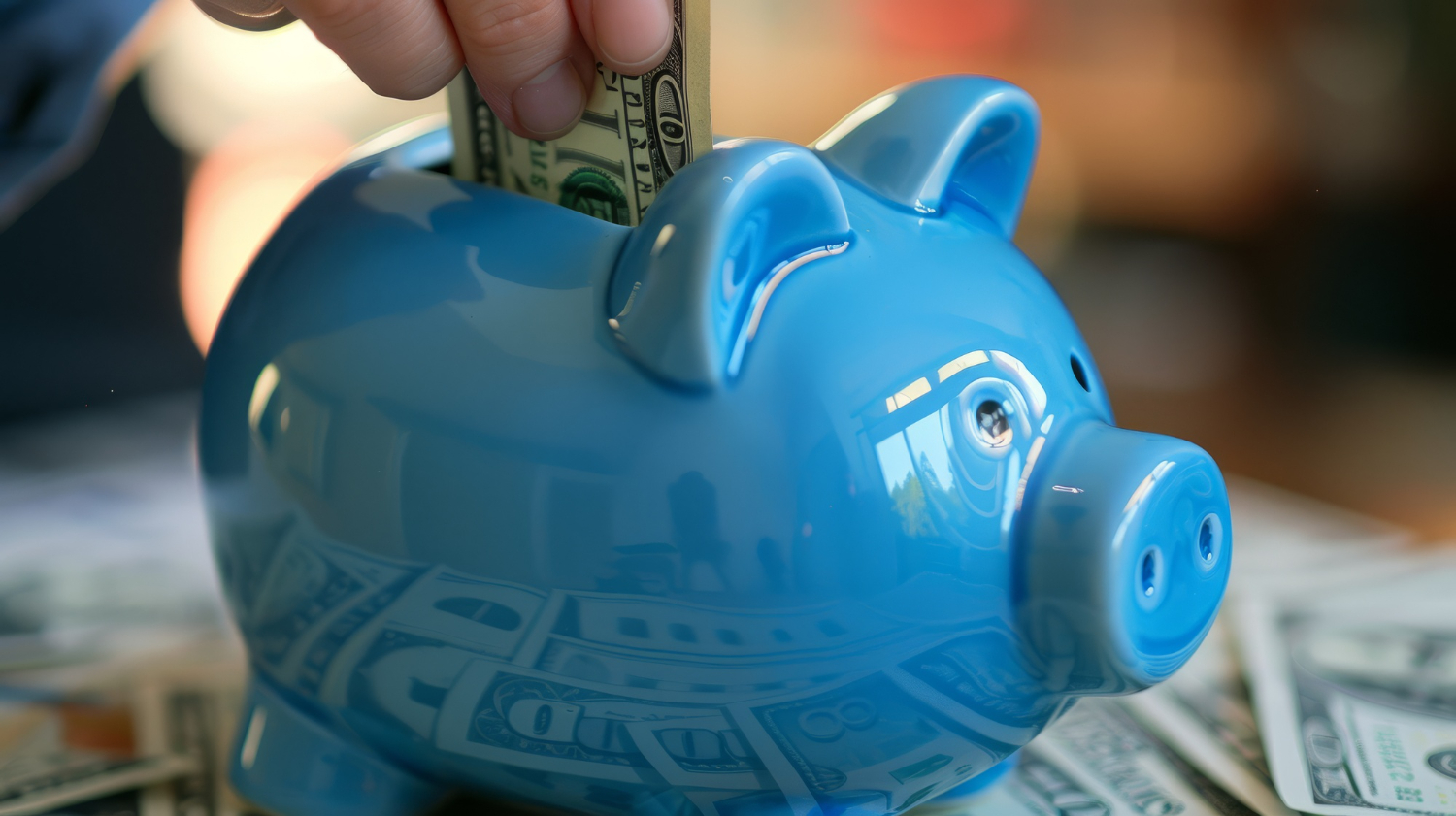
Building an emergency fund might seem like a daunting task, especially when you’re dealing with everyday expenses and financial commitments. However, the secret to creating a robust safety net lies in smart planning and disciplined habits. In this guide, we will explore practical steps to help you build your emergency fund faster than you thought possible. Whether you’re just starting or looking to boost your existing savings, these tips will put you on the fast track to financial security.
What Is an Emergency Fund and Why Do You Need One?
An emergency fund is a dedicated savings account set aside for unexpected expenses. It acts as a financial cushion to cover emergencies such as medical bills, car repairs, job loss, or urgent home maintenance. Having an emergency fund is crucial because it provides financial security and peace of mind, allowing you to handle unforeseen expenses without going into debt.
How Much Should You Save in Your Emergency Fund?
The general recommendation is to save three to six months’ worth of living expenses in your emergency fund. This amount can vary based on your lifestyle, job stability, and personal circumstances. To determine your target amount, start by calculating your monthly expenses, including rent or mortgage, utilities, groceries, transportation, and other essential costs. Multiply this number by three to six months to find your ideal emergency fund goal.
Start with a Clear Savings Goal
Setting a clear savings goal is the first step towards building your emergency fund. Knowing exactly how much you need will motivate you to stick to your plan. Break down your overall goal into smaller, manageable milestones. For example, if your goal is to save $6,000 in a year, aim to save $500 per month or about $125 per week. Breaking your goal into smaller chunks makes it easier to track your progress and stay committed.
Create a Budget and Track Your Spending
Creating a budget is crucial for building an emergency fund quickly. A budget helps you understand where your money is going and identifies areas where you can cut back. Start by listing all your sources of income and your monthly expenses. Categorize your spending into fixed expenses (like rent and utilities) and variable expenses (like dining out and entertainment). Look for areas where you can reduce spending and redirect that money towards your emergency fund.
Tips for Creating an Effective Budget
- Use Budgeting Apps: Apps like Mint, YNAB (You Need a Budget), or EveryDollar can help you create and manage your budget easily.
- Prioritize Essentials: Focus on necessary expenses first and reduce spending on non-essentials.
- Review Regularly: Regularly review your budget to make adjustments as needed and ensure you’re on track with your savings goal.
Automate Your Savings
One of the easiest ways to build your emergency fund faster is to automate your savings. Set up an automatic transfer from your checking account to your savings account every time you get paid. By automating your savings, you remove the temptation to spend the money and ensure consistent progress towards your goal. Even small, regular transfers can add up over time.

Reduce Unnecessary Expenses
Cutting back on unnecessary expenses is one of the most effective ways to save money quickly. Evaluate your spending habits and identify areas where you can make adjustments. This might include reducing dining out, canceling unused subscriptions, or choosing more affordable alternatives for everyday items.
Simple Ways to Cut Back on Spending
- Cook at Home: Preparing meals at home can save you a significant amount of money compared to dining out.
- Cancel Subscriptions: Review your subscriptions and cancel any that you don’t use regularly.
- Shop Smart: Use coupons, look for sales, and compare prices to get the best deals on groceries and other essentials.
Find Ways to Increase Your Income
Boosting your income is another powerful strategy to build your emergency fund faster. There are many ways to increase your earnings, from taking on a side job to selling items you no longer need. Even small amounts of extra income can make a big difference in reaching your savings goal sooner.
Ideas to Boost Your Income
- Freelance Work: Consider offering your skills online through freelancing platforms like Upwork or Fiverr.
- Part-Time Job: Look for a part-time job or gig that fits your schedule, such as tutoring, dog walking, or delivery driving.
- Sell Unused Items: Declutter your home and sell items you no longer need on platforms like eBay, Facebook Marketplace, or Craigslist.
Save Windfalls and Extra Money
Whenever you receive unexpected money, such as a tax refund, bonus, or gift, consider saving it instead of spending it. These windfalls can significantly boost your emergency fund if you commit to saving them. Make it a habit to deposit any extra cash directly into your emergency fund to accelerate your progress.
Avoid Common Saving Pitfalls
Building an emergency fund requires discipline, and it’s easy to fall into common saving pitfalls. Avoid dipping into your savings for non-emergencies, and resist the temptation to spend money that’s earmarked for your fund. Establish a clear definition of what constitutes an emergency and stick to it.
Pitfalls to Watch Out For
- Impulse Purchases: Impulse buying can quickly derail your savings plan. To avoid this, make a list before shopping and stick to it.
- Lifestyle Inflation: As your income increases, it’s tempting to increase your spending as well. Instead, keep your expenses the same and save the extra income.
- Relying on Credit Cards: Avoid using credit cards for emergencies if you have an emergency fund. Credit cards can lead to debt, while your emergency fund is a debt-free solution.
Monitor Your Progress and Stay Motivated
Staying motivated is key to reaching your savings goal. Regularly monitor your progress to see how far you’ve come, and celebrate your milestones along the way. Use visual tools like charts or apps to track your savings and remind yourself of the benefits of having a well-funded emergency reserve.
Tips to Stay Motivated
- Set Milestones: Break your savings goal into smaller milestones and celebrate each achievement.
- Visual Reminders: Use a savings tracker or visual reminders like a chart or jar to see your progress.
- Reward Yourself: Allow yourself small rewards for meeting savings targets, but ensure the reward doesn’t derail your progress.
Keep Your Emergency Fund Separate
To avoid the temptation of using your emergency fund for everyday expenses, keep it separate from your regular checking account. Consider opening a high-yield savings account that offers interest on your balance. This not only keeps your emergency fund out of sight but also helps it grow faster.
Reassess and Adjust Your Plan as Needed
Life changes, and so can your financial situation. Regularly reassess your emergency fund goal and adjust your savings plan as needed. If your expenses increase or your income changes, you may need to increase your savings rate to keep your fund at an adequate level. Stay flexible and be willing to adjust your strategy to ensure your emergency fund remains strong.
Make Saving a Habit
Building an emergency fund is not a one-time task; it’s an ongoing habit. Make saving a part of your regular financial routine by consistently setting aside money, even after you’ve reached your initial goal. Continuing to save will not only keep your emergency fund healthy but also help you build wealth over time.
Understanding the Benefits of an Emergency Fund
Beyond the immediate financial security, an emergency fund offers several long-term benefits. It reduces stress, improves financial stability, and provides a safety net that allows you to take calculated risks, such as pursuing new career opportunities or investing in personal growth. Understanding these benefits can reinforce the importance of maintaining your emergency fund.
Common Myths About Emergency Funds
There are several myths and misconceptions about emergency funds that can discourage people from saving. It’s important to dispel these myths and focus on the reality of how valuable an emergency fund can be. Let’s debunk some of the common myths:
- Myth: “I don’t make enough money to save.”
Reality: Even small amounts add up over time. The key is consistency, not the amount. - Myth: “I have credit cards; I don’t need an emergency fund.”
Reality: Relying on credit can lead to debt, whereas an emergency fund provides a debt-free solution. - Myth: “I’m too young to worry about an emergency fund.”
Reality: Emergencies can happen at any age. Starting early sets you up for long-term financial success.
Building an Emergency Fund in Tough Times
Even in challenging economic conditions, it’s still possible to build an emergency fund. The key is to focus on what you can control. Tighten your budget, look for creative ways to boost income, and stay committed to your goal. Remember that every dollar saved brings you closer to financial security, even if progress is slower during tough times.
The Role of Discipline and Patience in Saving
Saving money requires both discipline and patience. It’s easy to get discouraged if you’re not seeing immediate results, but remember that building an emergency fund is a marathon, not a sprint. Stay disciplined with your savings plan, resist the urge to dip into your fund for non-emergencies, and be patient as your savings grow over time.
Emergency Fund vs. Other Savings Goals
While an emergency fund is crucial, it’s also important to balance other savings goals. This might include saving for retirement, a home, or education. Prioritize your emergency fund first, as it provides the foundation for financial stability. Once your emergency fund is fully funded, you can redirect your focus to other goals without compromising your financial safety net.
The Impact of an Emergency Fund on Your Financial Future
Having an emergency fund not only protects you in the short term but also has a positive impact on your long-term financial health. It reduces the likelihood of accumulating debt, supports better financial decisions, and provides a safety net that allows you to invest in opportunities without undue stress. By prioritizing your emergency fund, you’re investing in a more secure and confident financial future.
Final Tips for Success
Building an emergency fund faster than you thought possible is achievable with the right strategies and mindset. Here are some final tips to keep you on track:
- Stay Consistent: Make saving a non-negotiable part of your financial routine.
- Be Flexible: Adjust your savings plan as your financial situation changes.
- Celebrate Milestones: Recognize your progress and stay motivated by celebrating small wins.
- Keep Learning: Continue to educate yourself on personal finance to improve your saving and budgeting skills.
You can also read : Reduce Debt Quickly: Easy Methods to Save Big
Conclusion
Building an emergency fund is one of the most important financial steps you can take to secure your future. By setting a clear goal, creating a budget, automating your savings, reducing unnecessary expenses, and staying disciplined, you can build your emergency fund faster than you thought possible. Remember, the key to success is consistency and patience. With each step you take, you’re moving closer to financial security and peace of mind. Start today, and watch your emergency fund grow into a powerful tool that safeguards your financial well-being.